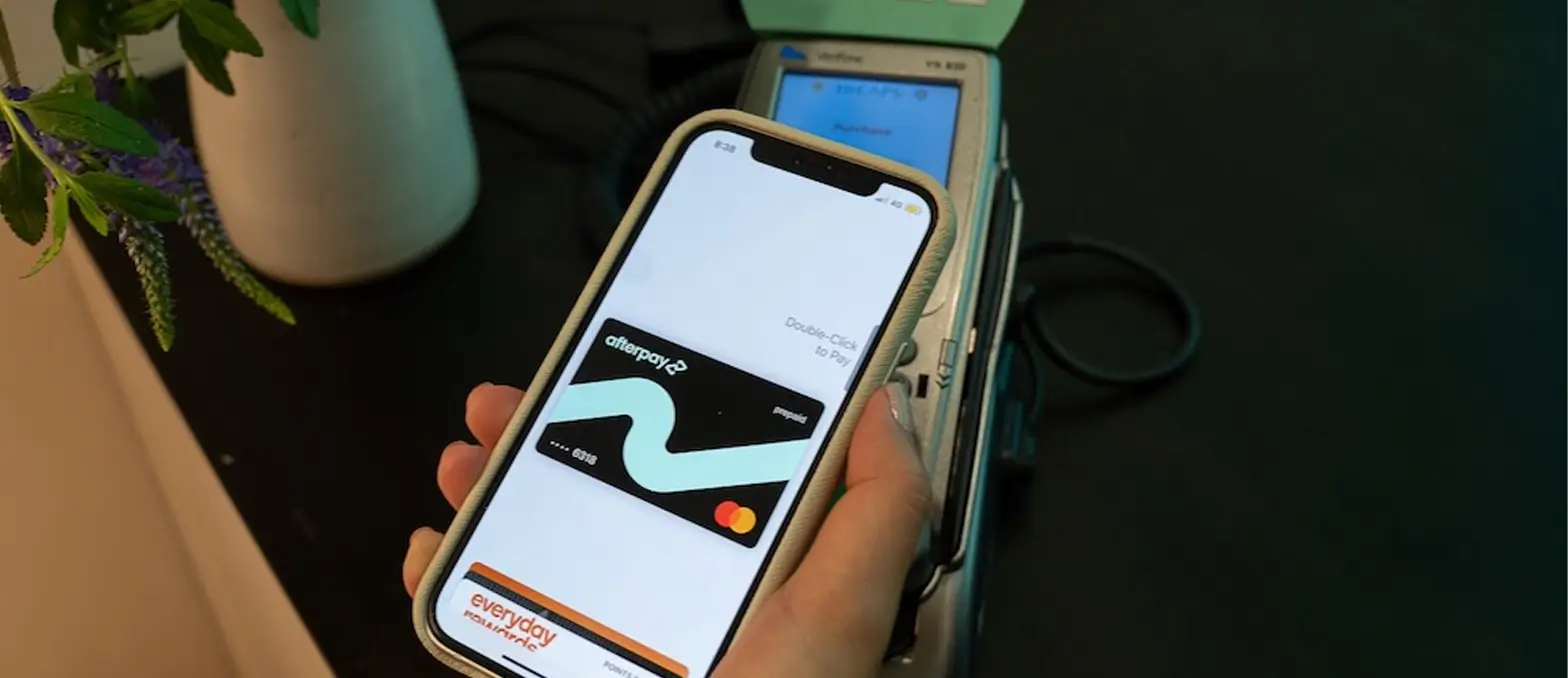Managing inventory is a crucial part of all businesses, especially those handling large amounts of physical goods. Within the many strategies and tools available, inventory management solutions play a vital part. As technology evolves, so do these solutions, moving from basic barcode systems to complex QR codes.
Barcodes were a basic type of inventory management. But, they could only store one-dimensional data, which limited their use. Over time, this made barcodes less popular and obsolete in today’s business world.
Stepping into barcodes’ shoes are QR codes. Today, they serve as two-dimensional data carriers in the business sector. Their unique patterns can hold various data types, such as location, identification, and even website links or app-specific links. This advanced feature makes them a powerful tool in inventory management software development, promising improved accuracy and efficiency in item tracking.
Nevertheless, why are QR codes so crucial to corporate mobility services? ‘Inventory management’ itself holds the key to the solution. We must first comprehend the importance of inventory control management. And then the rationale behind the switch from barcodes to QR codes in order to fully comprehend the function of QR codes.
Understanding what is in stock is only one aspect of inventory management.
It’s a well-planned approach to sourcing, storing, and selling inventory – be it raw materials (components) or finished goods (products). A well-run inventory management system prevents production delays, keeps inventory costs in check, and ultimately boosts customer satisfaction.
They’ve played a key role in enhancing inventory management software development, resulting in tools that let businesses manage their stocks more effectively, accurately, and reliably. By swapping barcodes for QR codes in the inventory management process, businesses can unlock a new level of control and optimization in their operations.
Why does inventory management even require a QR code?
The job of managing an inventory often spans more than a small warehouse. Especially in businesses with high output, the scale and variety of inventories can be massive. An inventory isn’t one type; instead, it splits into several stages and categories, like raw materials, half-done goods, finished goods, supporting goods, defective goods, and so on.
So, it’s common to find similar items in such inventories. The issue is to give each item a unique identity. This identifier should not only be a unique number, but it should also carry key info about the item’s end location, sender, and receiver.
Here’s where “Inventory Management Solutions” come in. These modern systems blend smoothly with wider industrial management solutions. They give an effective way to keep track of a large inventory. Plus, such services are a money-saving strategy for businesses.
But, if your business needs a more custom approach to meet its unique needs, “Custom Software Development Services” can be hired. These services work to understand your specific needs and craft custom inventory management ideas. This includes adding QR codes for better inventory tracking. In this way, your inventory management gets more efficient and effective, meeting the needs of your large and varied inventory.
Don’t forget good inventory management isn’t a luxury; it’s a need. It lets your business run well and efficiently. And with the right inventory management solutions in place, it becomes a job that’s not just manageable but is also tailored for your business’s success.
Why Barcodes are replaced with QR codes?
QR codes have brought a new wave in inventory management. They have altered the way we store and keep track of details. Barcodes had their time, but now, newer, better inventory management is gaining ground. To fully get why this shift is happening, we need to grasp the basic differences between the two.
Think of this simple comparison: a barcode can be the same on three distinct items, just like three books with identical titles by different authors. But a QR code is special for each item, just like an ISBN is for each book. This special feature offers a top-notch advantage of better tracking and a larger space to store details.
In a nutshell, it’s like how custom software development companies continually work to offer unique, custom-made answers for their clients, not relying on generic software. Their urge for personalization and effectiveness sets them apart from the rest.
Thus, after QR codes stepped into the business field, barcodes began to feel out of date. They’re being replaced, not due to inherent flaws, but because we’ve discovered a better, more developed tool – QR codes. These codes are more suited to the growing needs of modern inventory management solutions.
Just as the shifting software scene urges firms to partner with custom software development companies, the evolving needs of inventory management call for the switch from barcodes to QR codes. By making this move, firms can achieve better work efficiency, improved tracking, and more storage for data, staying one step ahead in a competitive market.
Advantages of having a QR code within inventory management
Ever think about the pluses of using QR codes? Here’s a peek at the key benefits.
Firstly, QR codes are a breeze to scan. That means you don’t need to be a techie to use them. All you need is a phone or a device, and you’re good to go.
Secondly, QR codes can pack a lot of info. In fact, they can store up to 100 times more data than barcodes. Imagine all the product info that you can keep in one small square.
Thirdly, QR codes come with a self-correcting feature. Even if the code gets a bit damaged or smudged, your scanner can still read it. This neat feature makes QR codes more reliable than other types of codes.
Fourthly, each QR code holds a unique identity. This means you can track items individually, which can be a great advantage in inventory management solutions.
Lastly, QR codes can store not just text but also URLs and geo-coordinates. Imagine being able to link to your product’s webpage or show its origin directly from the code. That’s a lot of info packed in one tiny square!
QR codes offer a unique blend of convenience, capacity, and versatility. They are easy to use, can store loads of info, and are self-correcting, unique, and flexible. If you’re looking for effective inventory management solutions, QR codes might be your best bet!
6 Ways QR Codes Enhance Inventory Management Solutions
Live Tracking of Inventory
Using QR codes in inventory management systems brings a special bonus. It lets you track inventory live. Traditional ways can involve lots of data entry or even counting by hand. With a QR code, updates are immediate. Picture a QR code as a book. This quick tracking feature is super handy for small businesses and large ecommerce software makers in the USA. It gives a clear and current view of inventory.
Better Accuracy
Accuracy is the secret to good inventory management. It’s like following a recipe in cooking. Each item in inventory is an ingredient. QR codes are your detail-focused chef. They make sure that the inventory, like the recipe, is perfect each time. They store and give accurate product details, avoiding possible human mistakes from manual entry. This increase in accuracy leads to better customer service and smoother operations in inventory management.
Easy Pairing with Other Systems
In the broad and connected world of inventory management, QR codes act as universal links. They’re like a well-traveled diplomat. They can blend seamlessly with various systems and software. This includes everything from your own inventory database to third-party ecommerce software in the USA. This easy pairing creates a more unified and efficient work process. It lets businesses manage their inventories well.
Rich Product Information
In inventory management, knowing more means having more power. QR codes are like tiny information safes. They can hold detailed data about each product. That’s way beyond the simple number labels found in traditional barcodes. It’s like having a biography for each product, showing its full story in a quick look. This treasure trove of product information helps inventory management systems. It aids in tracking products, filling orders, and even predicting demand.
Scalability
Growth in business is a good goal. But it can bring its own issues, especially in inventory management. Think about trying to fit a growing tree into a small pot. Soon, the roots would outgrow the space. QR codes give the needed flexibility and scalability for growing businesses. It’s like a pot that grows as the tree does. With their ability to hold lots of data and pair it with various systems, QR codes are the perfect tools for inventory management. They can support businesses as they thrive.
Saving Time and Money
Saving time and money keeps inventory management systems working well. Like a well-oiled machine, QR codes make inventory management more efficient. Firstly, their quick scan feature means tracking items is faster, saving worker time. Secondly, their better accuracy cuts the time and money tied to fixing mistakes. Lastly, the live tracking by QR codes cuts the need for many manual checks, leading to big savings on labor costs.
Therefore, using QR codes in custom software development companies in the USA is changing how businesses handle their inventories. From small stores to big ecommerce software makers in the USA, QR codes are making inventory management modern through live tracking, better accuracy, easy pairing, rich product information, scalability, and saving time and money.
Case Studies of Successful QR Code Usage in Inventory Management
Here’s a brief look at firms that have used QR codes in their inventory management solutions with success. QR codes are changing the game in inventory management, from tiny retail stores to world-famous giants and software development consulting companies.
Let’s look at Walmart, the giant retail store. Walmart had the huge task of keeping tabs on millions of items in inventory. Their answer? QR codes. That is helping Walmart manage and track its vast inventory in real-time. The result? Inventory management that’s never been easier or bigger.
Let’s not forget the e-commerce king, Amazon. They’re using QR codes a lot. Amazon uses QR codes to boost the reliability of its inventory management solutions. Imagine QR codes as hard-working librarians. Each one keeps track of many items in Amazon’s huge product library.
But QR codes aren’t just for the big players. Small and medium businesses can use them, too, as many software development companies have shown.
For Walmart, QR codes have made tracking their massive inventory easy. This has made their supply chain run more smoothly and reduced costs linked to lost or poorly managed stock items.
Amazon has seen better accuracy from using QR codes. Mistakes with delivery, wrong stock counts, and unhappy customers have dropped a lot. The librarian here, the QR code, has done its job brilliantly!
QR codes are like beacons, guiding firms through the tricky waters of inventory management, getting them safely and efficiently to their targets.
Enterprise Chatbot Development for ECommerce
In today’s digital era, doing business is like exploring a lively city with countless routes. A route that’s catching on is the use of chatbots in eCommerce. Enterprise chatbot development acts like a helpful guide; chatbots aid customers through the maze of online shopping options. They play a key part in delivering efficient inventory management ideas, helping with ordering, and offering quick customer support.
Revamping How We Interact with Customers
Chatbots are like friendly helpers in the world of online shopping. They’ve transformed the way we communicate with shoppers. They are quick to answer queries and help customers pick the right product, making them a vital part of the process. Chatbots give customers a quick overview of available items, much like a handy catalog, aiding them in making wise decisions.
What’s more, chatbots are always there, day or night, and bring a unique personal touch to each customer chat. They act as individual shoppers’ allies, recognizing preferences and making recommendations that are specifically suited to them. For businesses trying to improve their client interactions through efficient ecommerce software solutions, this level of personalized attention is a great plus.
Elevating Inventory Management Solutions
Chatbots can play a big role in making inventory management solutions smoother. Think of a chatbot as a meticulous librarian that meticulously keeps track of each book in a sizable library. Chatbots are a simple way to handle a variety of inventory duties, from product availability to order monitoring.
They can reduce human labor by rapidly informing customers about product availability. Additionally, chatbots can be programmed to notify management of things that are running short on supply, ensuring that stock levels are correctly maintained. With this degree of automation, businesses are managing their inventories more accurately and efficiently.
Improving the Shopping Process
Chatbots enhance the entire buying experience like the cherry on top of a delicious cake. They provide prompt responses and solutions and are always willing to assist. Customer loyalty is greatly increased by this caliber of customer service.
Even the most effective human customer service representative cannot compete with chatbots’ ability to handle several consumers at once. Because of their scalability, they are a top option for major eCommerce companies. They are looking to improve customer service without significantly expanding their personnel.
Statistical analysis
Chatbots are not just great help-desk buddies. They’re also top-notch number-crunchers. These bots can bring out helpful facts about customer likes and dislikes. When these facts get a good look-over, they can aid businesses in tailoring what they offer. They also help in making choices based on solid data and making their online store services better.
To cap it all, crafting chatbots for online stores is like riding a wave that’s just about to crest. Chatbots are the fresh, exciting tech that’s bringing new things to online shopping by making chats with customers better. They lend a hand in making stock-keeping plans better, in making the shopping trip nicer, and in giving useful data. As a result, putting chatbots into your plans could be the magic key to hitting the jackpot in the online world.
Retail & Ecommerce Software To Boost Your Business Sales
In the fast-paced world of eCommerce, it’s crucial for businesses to keep up. As we dive deeper into this busy digital marketplace, the need for smart and user-friendly software becomes clear. Here comes the retail and eCommerce software, a tech expert that provides top-notch inventory solutions and helps boost your business sales.
When it comes to integrating various aspects of your online business, think of eCommerce software as the conductor of a symphony. It manages everything under one user-friendly platform, including processing payments, maintaining inventory, and providing customer service. This software is the secret ingredient that ignites your online store and equips you with the resources you need to succeed.
For instance, inventory management is made easy. Imagine having a personal assistant who is always aware of your stock levels, what is running low, and what is moving quickly. Automation, effectiveness, and precision in inventory management solutions are precisely what eCommerce software provides.
Increasing Commercial Sales
Consider ecommerce software as a technique to increase your sales rather than just a tool for organization. It’s like having a team of sales experts, marketers, and customer service champions all working together to grow your profits. That’s the true power of ecommerce software.
The software includes features like a product recommendation system. It can offer products that complement what the customer is buying, which can lead to larger purchases. It’s like having a clever store assistant who knows just what the customer might fancy, suggesting goods at just the right moment.
Moreover, it can design unique shopping experiences, shifting the way you do business. Imagine a small shop owner who knows each customer and what they like. In the same way, the software can modify product listings, emails, and promotions, based on how the customer behaves. It’s a sales strategy that’s as personal as it gets.
Boosting Customer Engagement
Helping your sales grow is all about getting your customers involved. If a customer likes hanging out at your online shop, they’ll most likely buy something.
Ecommerce tools help companies form close bonds with customers. They can send emails made just for each customer based on what they like or often buy. This personal touch is a powerful way to pull in customers. It makes them feel valued and gets them excited to buy more.
Smoothing Out Operations
Ecommerce software serves as the gears in your online business machine, ensuring everything runs without a hitch. From managing orders and taking care of payments to tracking shipments – it efficiently handles it all. This smooth operation not only lowers costs but also improves customer happiness, which, in turn, boosts sales.
As we traverse the landscape of online retail, the perks of ecommerce software development companies In the USA become more and more evident. It’s a powerful tool that offers complete inventory management solutions, boosts sales, enhances customer engagement, and smooths operations. In the lively digital marketplace, eCommerce software is the guiding light that points your business to success.
Unlock the Potential of QR Codes for Streamlined Inventory Management Today!
Conclusion
As we wrap up this easy-to-understand trip into QR codes and inventory management, let’s remember the main points. We’ve seen QR codes make inventory management better, quicker, and more affordable. Let’s quickly go over what we learned and look ahead.
QR codes have shown to be a great help to companies worldwide. They are a potent tool for accurate, real-time inventory tracking. This reduces mistakes and boosts overall productivity.
These small, square barcodes hold a lot of data. When scanned, they show not just a product’s name and amount. But also fine points like location, expiry dates, and past data. In inventory management, this is a big change. It allows for more accuracy, lowers operational costs, and improves decision-making.
Also, combining QR codes with different inventory management software is easy. This makes them a handy choice for businesses of all sizes. With QR codes, growing is no longer a problem. They adapt as your business expands, making sure your inventory management solutions can always handle the job.
QR Codes and Inventory Management in the Future
As we step into the future, QR codes’ role in inventory management will keep growing. With tech getting better, we can expect even more complex uses of QR codes.
Think of the possibilities of QR codes working with advanced techs like Artificial Intelligence (AI) or Machine Learning (ML). These could forecast inventory needs based on past data, boosting efficiency and reducing waste. The future sure looks bright!
As companies keep aiming for better operations and accuracy, adopting QR codes into their inventory management isn’t just a trend, it’s a need. Shifting from old ways to a QR code system may seem tough, but the benefits are worth it.
Join The QR Revolution!
The time has come for your company to join the QR code revolution if you’re looking for efficient inventory management solutions. Keep in mind that keeping up with the latest technology is essential for survival and growth in today’s fast-paced corporate environment. By providing a quick, easy, and economical solution to monitor your inventory. QR codes help you stay competitive. Take action now with A3logics and modify your inventory management system!
FAQ’s
What distinguishes barcodes from QR codes?
Barcodes are more traditional and one-dimensional and store data as lines and spaces. They are frequently employed for things like IDs or product prices. QR codes, on the other hand, are two-dimensional and have larger data storage capacity.
Why are QR codes superior to barcodes for monitoring inventory?
QR codes have many benefits over barcodes. They can store a lot of information, including detailed product data. This greatly helps with managing inventory. QR codes can also be read from any angle, making the scanning process easier and quicker. Finally, they can still be read if they’re partly damaged. This makes them sturdy in busy inventory environments.
How do QR codes make inventory management more accurate?
Accuracy is very important in inventory management solutions. Mistakes can cause sales to be lost, operations to be disrupted, and customers to be upset. QR codes can help greatly reduce these errors. Because QR codes can hold a lot of data, they can contain detailed product information. This reduces the chance of misunderstandings or mistakes during manual entry. Also, the scanning process is fast and removes the chance of human error. This ensures high accuracy levels.
Can QR codes be used with any inventory management software?
Definitely! QR codes can work with various inventory management software because of their universal design. This means businesses can choose the software that meets their needs best without worrying about whether it will work with the codes.
How do QR codes allow inventory to be tracked in real-time?
QR codes let real-time tracking happen by storing dynamic data. When a QR code on an inventory item is scanned, the data is immediately updated in the system. This lets businesses see their inventory levels in real-time.

An IT company delivering the best in a constantly changing world. Our passion is to create feature-rich, engaging projects designed to your specifications in collaboration with our team of expert professionals who make the journey of developing your projects exciting and fulfilling. Get a 30 Min free consultation to convert your dream project into reality.












![10 Top IoT Security Solution Providers in USA [2024]](https://www.a3logics.com/blog/wp-content/uploads/2024/04/New-Project-4.webp)